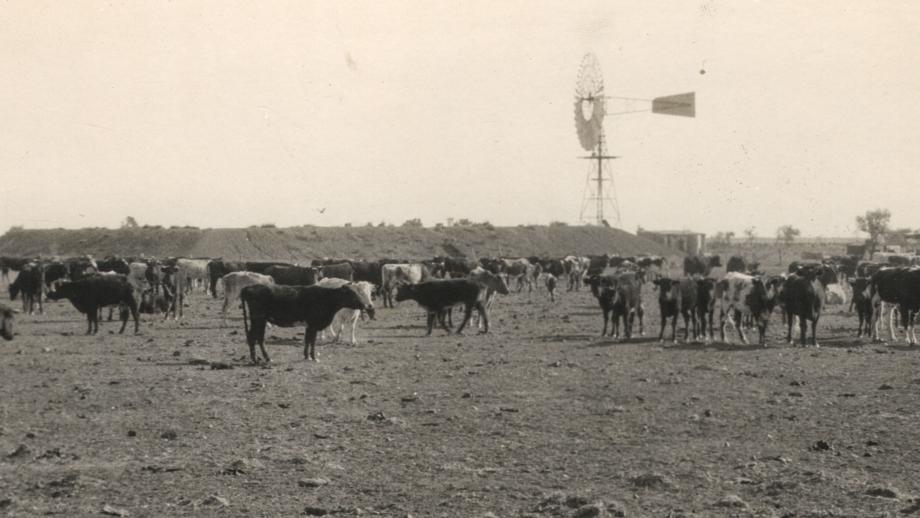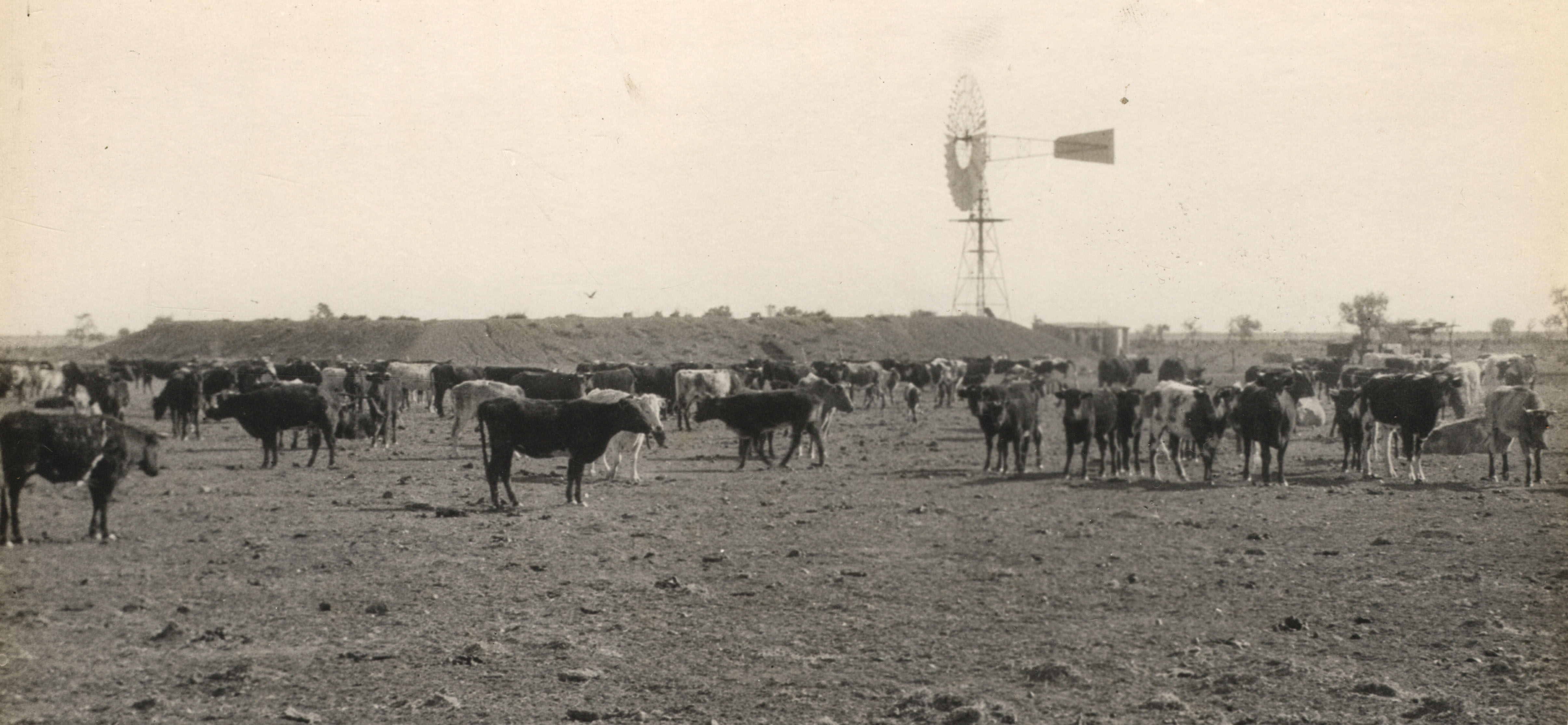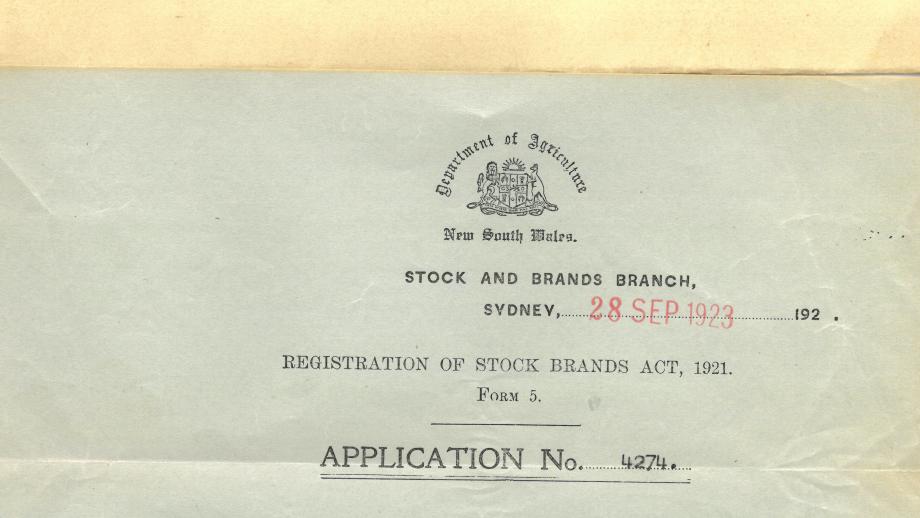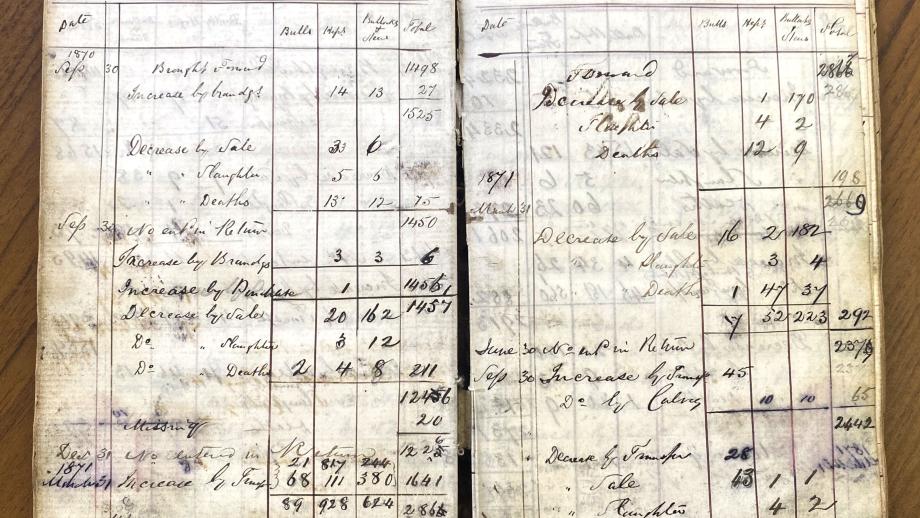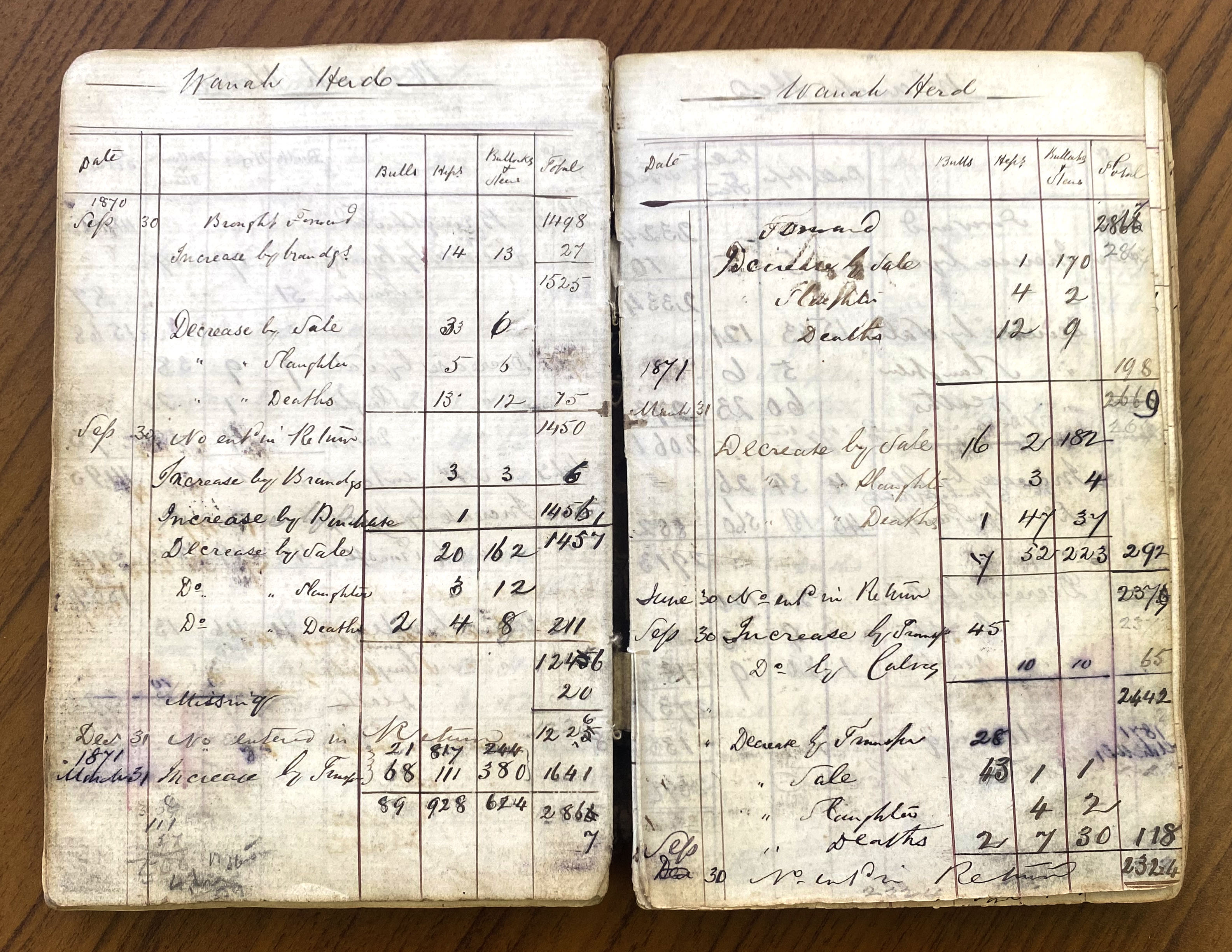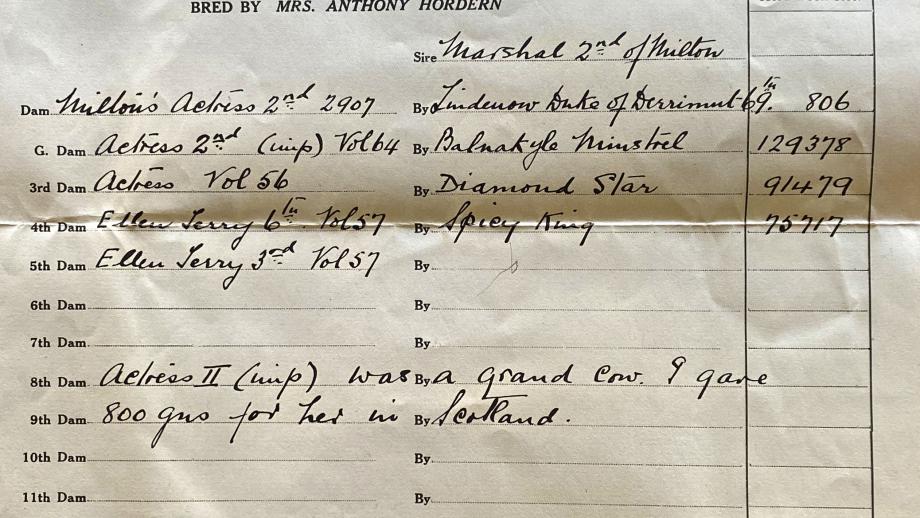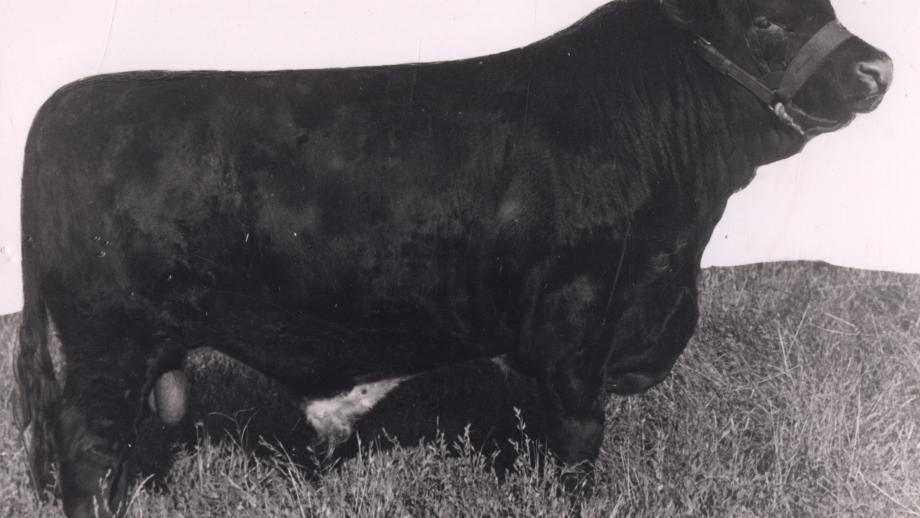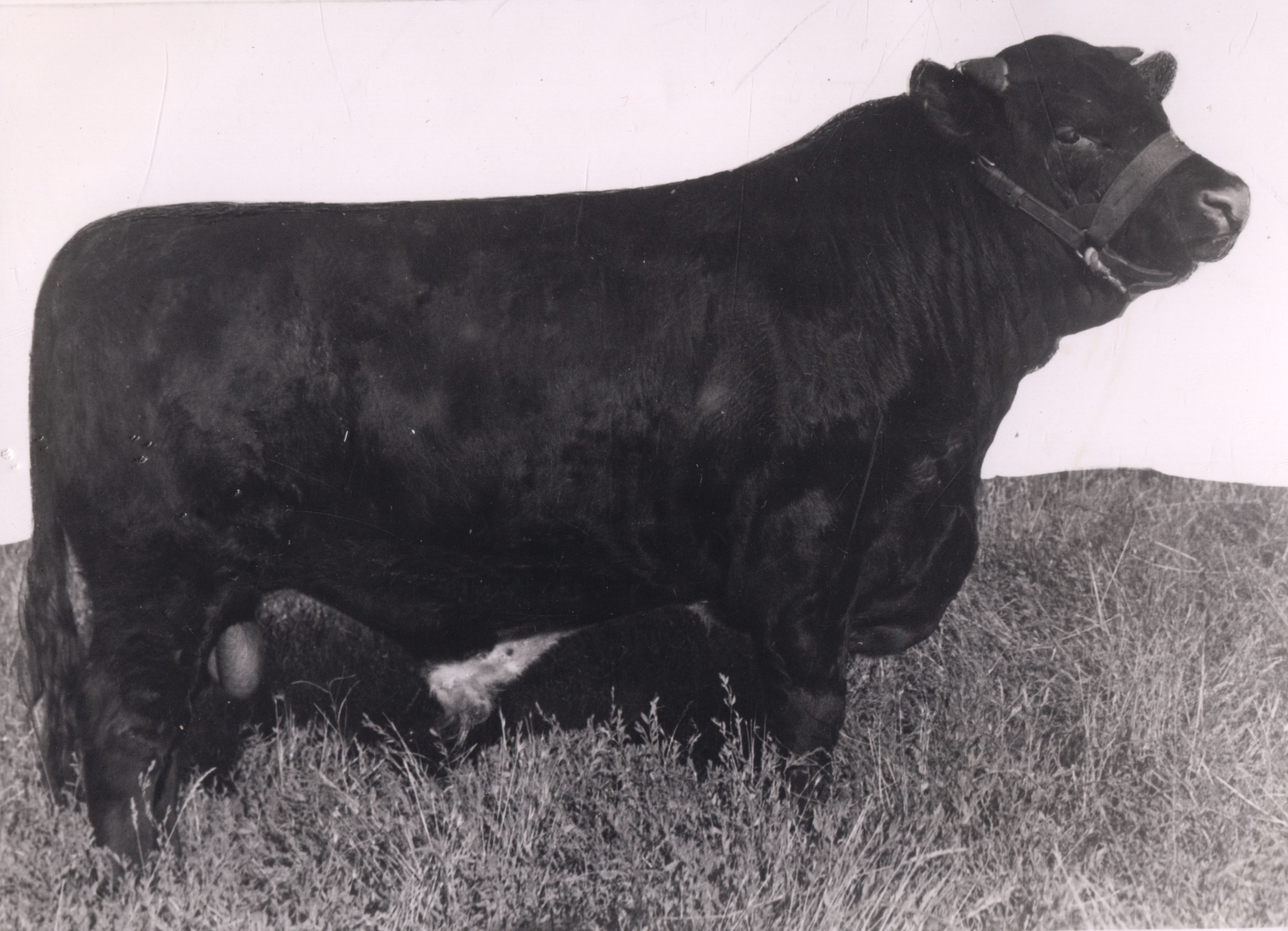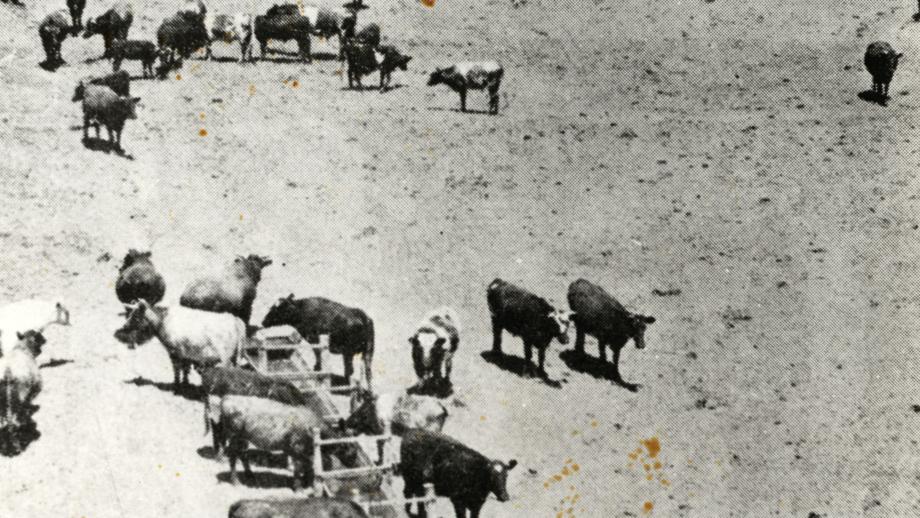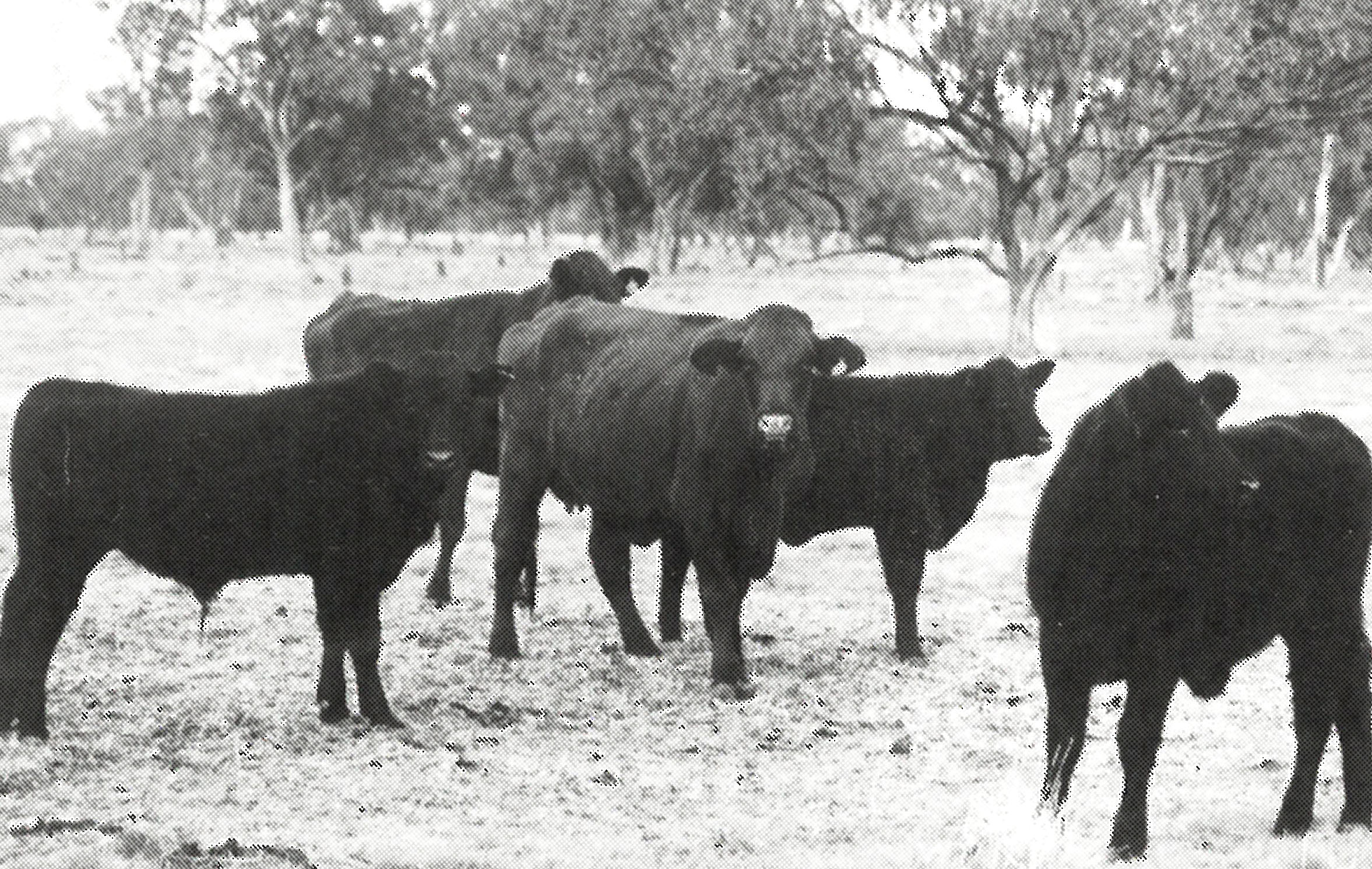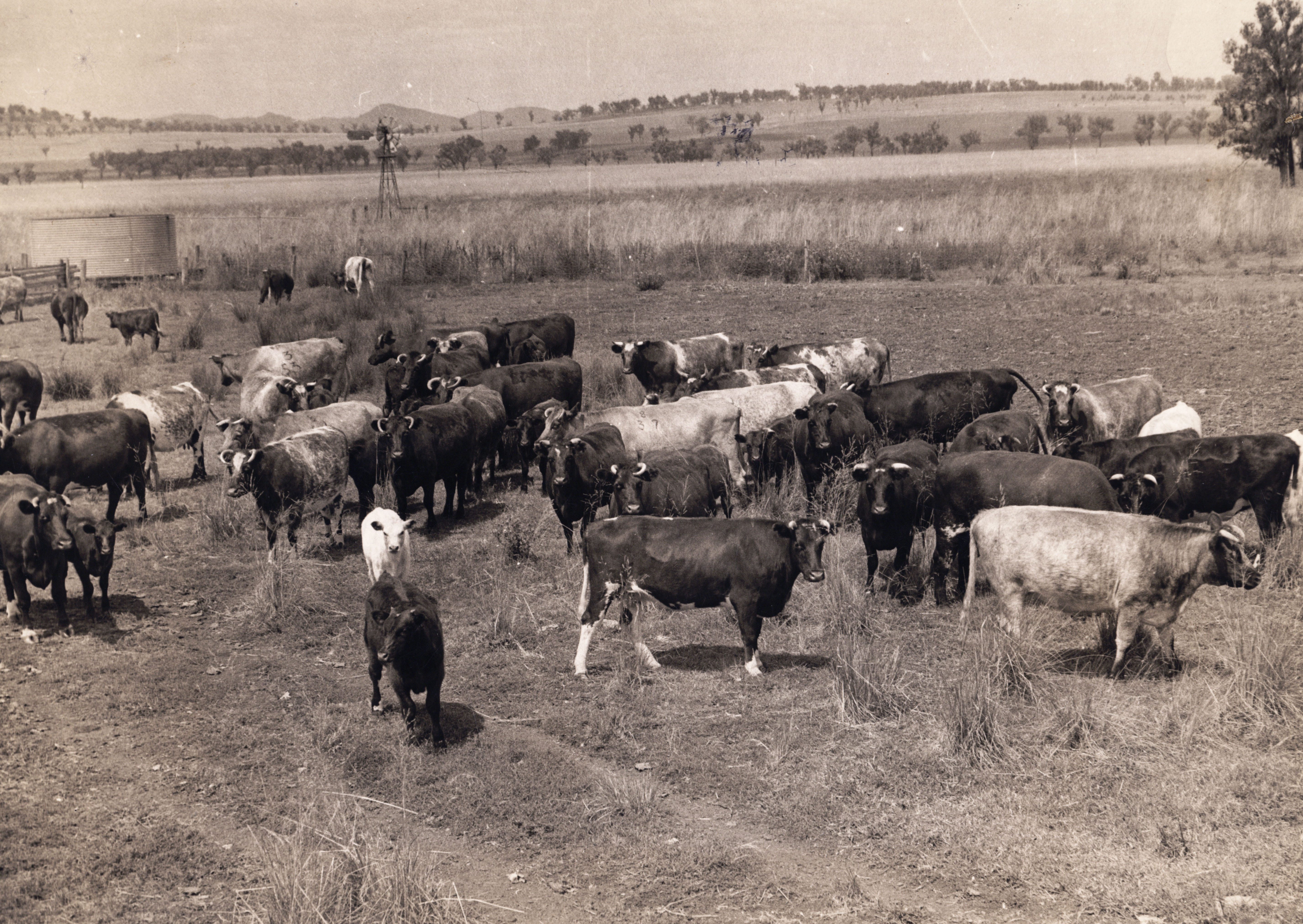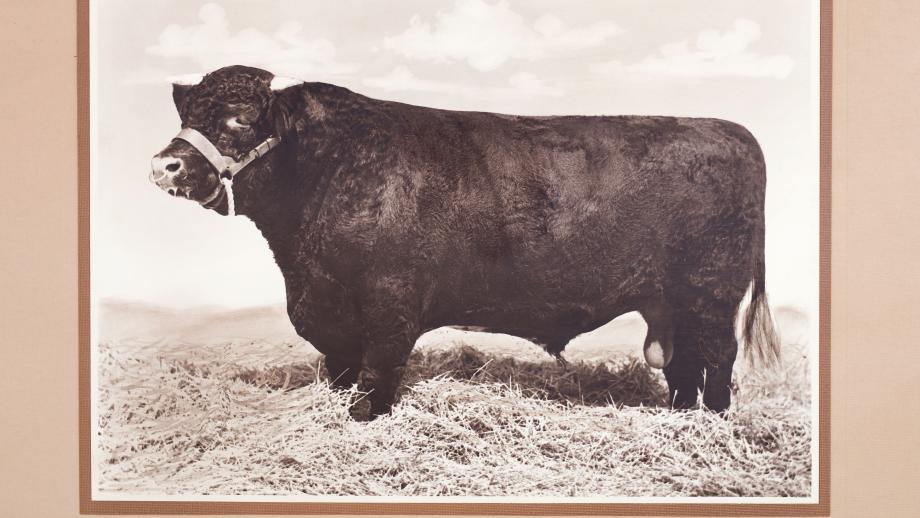Cattle
Although the Company’s original focus was the production of wool, cattle were introduced at the Company's Port Stephens Estate at the same time as sheep, albeit in much smaller numbers. The cattle ran at first on the Bundobah Run, near Port Stephens Harbour, but were soon moved north, with a cattle run established in the Vale of Gloucester (Gloucester) on the Port Stephens Estate and cattle sales held at the Maitland markets.
Until the introduction of paddocks in the 1860s most of the cattle roamed free on large runs under the general charge of stockmen. Every year, when possible, they were mustered – systematically run into stock yards where they were counted and the fringe on their tail was cut so they were not counted again. This was called a 'bangtail muster' ('bang' in the sense of a 'straight fringe').
Cattle were established early at both the Company’s Warrah and Peel Estates. When the sheep were removed from Port Stephens, the Company considered working mainly with cattle at Gloucester and Warrah. However, when the Gloucester Estate Syndicate purchased 200,000 acres north of Stratford on the Gloucester Estate from the Company in 1903 for subdivision as dairy farms, they also purchased the Company’s remaining cattle there at £5 per head. The Company did however purchase some cattle at the 1908 dispersal sale and sent to them to Warrah, maintaining a connection with their original Gloucester herd.
In hard times, most of the Company’s cattle were sold for meat or boiled down for tallow. 'Horn tips' were also exported, used for buckles, buttons and knife handles before plastic was in wide use.
By the early 1900s, the Company had exited coal mining at Newcastle, sold the last of its land on the Port Stephens Estate, and saw the first sales and resumptions of land on the Warrah Estate, with others pending at the Peel. Following the First World War, the labour required to produce wool was in short supply and during both world wars the Company’s clip was compulsorily acquired by the British Government as a war measure. This prompted a shift away from sheep and towards cattle, although the Company continued to maintain flocks on its pastoral stations and a wool boom in the 1950s enabled the Company to continue to purchase properties, particularly in Queensland, for both wool production and beef breeding and fattening.
In the 1950s Australia negotiated a new agreement to export more beef to Britain and a beef shortage in the United States resulted in increased exports there. At the same time, the Company introduced the Santa Gertrudis breed of cattle from the United States, adding the breed to its existing Shorthorn herd with great success. In 1950, General Superintendent Rudolf (Dolf) Schmidt visited the King Ranch in Texas and was impressed by their Santa Gertrudis breed. Recognising the similarities in climate between Australia and Texas, Schmidt gained support to establish a Santa Gertrudis stud, to be named Goonoo Stud, near Tamworth. In 1953, the Company purchased its first Santa Gertrudis bull ‘Little Bob’ from King Ranch Australia. The following year, the Company imported the first of its Santa Gertrudis breeders from Texas. This included 16 heifers from the Armstrong Ranch and 3 bulls from the King Ranch. This herd, along with a selection of the best cattle from the Shorthorn and Poll Shorthorn Studs at Warrah and the Peel formed the foundation for the highly successful Goonoo Stud. The group imported from Texas included the only pure Poll Santa Gertrudis female in Australia at the time. She produced 15 calves including champions Goonoo Javelin and Goonoo Priscilla, and lived to the age of 18 years.
On 1 July 1959 the Australian Agricultural Company acquired the Peel River Land and Mineral Company, the company it had established back in 1854 in order to mine on the Peel Estate. In taking over the Peel Company, the Australian Agricultural Company now owned 19 pastoral stations across New South Wales, Queensland, the Northern Territory, and Western Australia with 136,000 cattle and 143,000 sheep. By this stage 75% of the Company’s income came from beef.
In the 1960s, the use of road trains and helicopter mustering allowed for more efficient movement of cattle. The Santa Gertrudis breed continued to thrive and gradually replaced the Company’s Shorthorn herds, particularly across the Barkly Region.
In the 1980s, the Company introduced Brahman cattle to its herd and today this breed is predominant at its Dalgonally, Wondoola, and Canobie Stations in Queensland and Camfield, Montejinni, and Delamere Stations in the Northern Territory.
Today the Company specialises in the production of grain fed and Wagyu beef, with a herd of around 433,000 cattle, including its own Northern Australia breed the Mitchell and the largest Wagyu herd in Australia. The Company currently operates around 6.5 million hectares of land across Queensland and the Northern Territory, which equates to approximately 1% of Australia’s land mass (Australian Agricultural Company nd). The Company's beef is sold on the Australian market and exported around the world including to the Middle East, United States, Europe and Asia.
